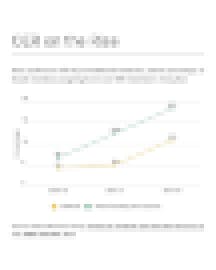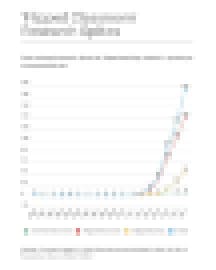It’s popular these days to complain that college teaching hasn’t changed in hundreds of years. And sure, it’s possible to find some professors on any campus holding yellowed lecture notes, or clinging to dusty chalk. But the reality is that the internet and digital technologies have already brought profound changes to instructional styles and tools in higher education.
So what are the new teaching approaches catching on at today’s campuses? And what are the broader cultural changes around college teaching?
We set out to answer those questions over the past year, with a series of articles and interviews exploring what teaching in the 21st century looks like. Some show the nuances of the challenges of teaching with technology by telling stories of innovative professors, including how a water agency official who teaches an online community college course got started in creating open educational resources when her class was incorporated into a zero-cost textbook degree program. Others dive into research on the culture of teaching, like a talk with an anthropologist studying how professors react to (and sometimes resist) research on teaching practices.
We’ve grouped the twenty articles in the series around six key observations. And through our work on the project, we decided to launch a monthly advice column about teaching in higher education. Readers can submit their own questions, and the column will continue to speak to the many instructors grappling with the complicated changes—from trying to engage a more-diverse student population, to teaching in an era when students feel like they can find answers on Google and when digital tools allow a rethinking of the instructor’s role in the classroom. —Jeffrey R. Young
More professors are shifting from textbooks to OER
It’s safe to call the push to replace commercial textbooks with low-cost digital materials a movement. In the past year, the percentage of faculty assigning open educational materials (OER) has doubled compared to last year. That number is still small—just 13 percent of professors surveyed—but colleges have noticed, and are now building an infrastructure to support the practice and measure its impact.

For instance, a new consortium is just getting started between three public university systems—University System of Maryland, City University of New York and State University ofNew York—to spread the word about OER on their campuses and negotiate deals with providers of the low-cost options. A key component of the effort is to try to shift the conversation around OER from cheaper replacements for textbook to showing that the remixable online materials can improve student success, says M.J. Bishop, and associate vice chancellor at the University System of Maryland. One reason, she says, is that if the conversation stays focused on cost, then traditional publishers may end up keeping the system largely the same by offering some low-cost options of their own within the old way of doing business. They’re calling the group DOERS3, or Driving OER Sustainability for Student Success.
Colleges around the country have also started hiring staff members with titles like OER Coordinator and Affordable Content Librarian. Our series looked into how the movement is changing, and the research into the costs and benefits. You can even hear a podcast version here.
Flipped classrooms seem to be growing exponentially
One of the most vocal advocates of “flipped” teaching happens to be a math guy, and he’s crunching the numbers on how big the teaching trend is getting. He’s Robert Talbert, a professor of mathematics at Grand Valley State University and author of the book Flipped Learning. Talbert recently tabulated how many scholarly articles are published each year about “flipping” instruction, meaning that traditional lecture-style material is delivered before class (often using videos) so that classroom time can be used for discussion and other more active learning. What he found shocked him: research on the topic is growing exponentially.
“The number of publications on flipped learning is doubling every 16 months,” he said in a recent interview with EdSurge. An increase in flipped learning research suggests a similar growth in the practice, since many of the papers detail experiments by the authors in their own classrooms. “I can’t think of any other research area that has this problem,” he says, and by problem, he means a challenge in keeping up with the literature. “I don’t have the time or space to read all this stuff.”

Part of the reason for the growth is structural. For instance, Talbert said, the accrediting body overseeing pharmacology schools has required that at least some class time be devoted to active learning, which flipped classrooms also prioritize. “That’s baked into their accreditation now—that’s a big deal,” he said. The approach often relies on technology, but it doesn’t have to. And that flexibility—and lack of any one vendor controlling it—may be one reason it is spreading so quickly. Our series features a longer interview with Talbert, and a look at one professor’s experience with the approach and the lessons she learned.
More professors are looking to experts to help them teach. (Though some resist.)
Cultural change on campus can be hard to see. And because each professor largely makes their own decisions on what happens in their classrooms, updates to instructional practices can seem like a glacial pace to outsiders.
But change is happening. One way this is the most apparent is with the ways colleges are supporting instructors and faculty around better teaching practices.
One example is the steady rise in colleges that are hiring instructional designers to advise on improving courses, especially when building online offerings. By 2016, there were an estimated 13,000 instructional designers on U.S. campuses, according to a report by Intentional Futures. And that number seems to be growing.
There’s also a growing acceptance of the scholarly discipline known as “learning sciences,” a body of research across disciplines of cognitive science, computer science, psychology, anthropology and other fields trying to unlock secrets of how people learn and how to best teach. “For our newer faculty in their late 20s and 30s, many of them are coming in with more knowledge of the science of learning,” said Bernard Bull, president of Goddard College who publishes a blog and podcast about educational innovation. “It’s now much more common for me to come across faculty across disciplines who use language from mind-brain education or brain-based learning or cognitive science.”
That said, our reporting found an ongoing culture clash between faculty members and instructional designers, with some faculty expressing resistance to having an outsider suggesting changes to the way they deliver their courses, even when such changes are based on research or university policies involving things like accessibility.
Julia Hart, an instructional designer at Columbia Southern University, said one recent encounter she had with with a professor was so contentious that the professor didn’t want to talk to her anymore. “A lot of it had to do with the fact that he didn't want me telling him that we need to do this and that and the other thing, even though that was a university policy and I'd have to follow it.” She said that a dozen of her colleagues shared similar experiences, though she added that many other professors have welcomed her help.
It turns out there’s a classic study that shows that professors think they’re better teachers than they actually are, an attitude that can get in the way of efforts to teach teaching to faculty, as we look at in this series. We also sat down with an anthropologist who explored faculty attitudes toward research about teaching, and held an online town hall with an MIT expert on learning science.
The classroom isn’t the only place to learn
It can be easy to forget that much of what students learn at colleges happens outside the classroom. But a growing number of professors and campus leaders are rethinking other spaces on campus and online to improve teachable moments.
Among the examples we found: experiments with putting office hours online to get students to show up, bringing virtual reality to science labs to broaden what students could explore there, and changing how homework and tests are written.
Students are also finding their own new ways to learn online, by engaging in online activism. The era of a campus bubble seems over in the age of Twitter, and students know that adding their voices to national debates is as easy as typing a hashtag.
Colleges are still struggling to find the best fit for online education
The ability to deliver education on the internet is pretty much an invention of the 21st century (technically you can find some online courses dating back to 1994). Compared to the hundreds of years colleges have existed, this mode of teaching is still in its infancy.
In that short time, there have been fits of excitement over how the format could lead to revolutions in access, or bring riches to those who offer them, or both. The most recent hype arose over Massive Open Online Courses, or MOOCs, which brought highly-selective colleges into online education and a rush of excitement that self-service online courses could provide a low-cost alternative to going to a campus. These days few are chasing that dream, and the pioneers of the form are pivoting to other missions.
We dove into what lessons can be learned from MOOCs, as well what research so far about which audiences online can best serve.
And what does it mean to teach an age of information overload and polarization?
Perhaps the toughest questions of all about teaching in the 21st century is what exactly is the professor’s role in the Internet age. Once upon a time the goal was to be the ‘sage on the stage,’ when lecturing was king. Today many people argue that the college instructor should be more of a ‘guide on the side.’ But as one popular teaching expert notes, even that may not quite fit.
And in an era of intense political polarization, colleges and professors are looking for best to train students to become digitally literate so they can play their roles as informed citizens. But just how to do that is up for debate, though some are looking for a nonpartisan solution.


